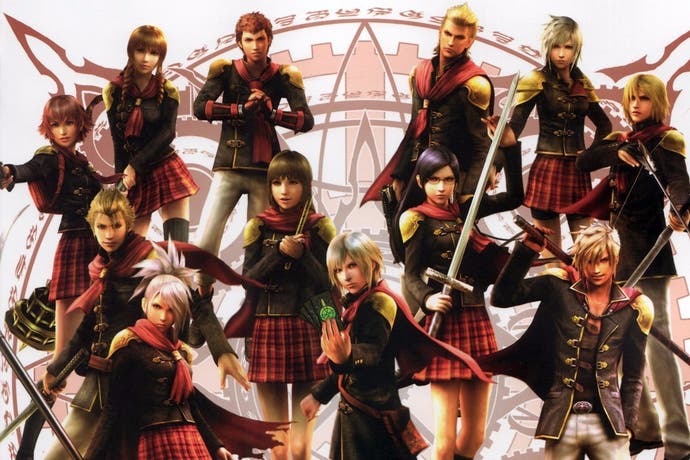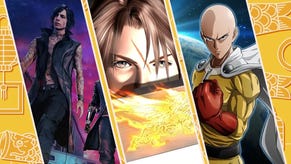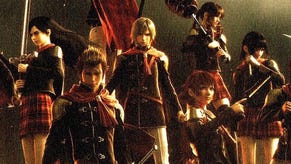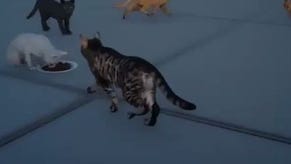Final Fantasy Type-0 HD review
Might and magitek.
When the Khmer Rouge took control of Cambodia in the mid-70s, the term 'Year Zero' was coined to describe the idea of revolutionary change. Existing traditions would be thrown away, and a new culture would be established. Type-0 similarly alludes to a fresh start: the idea behind the original PSP game, released four years ago in Japan, was to hit the reset button on the Final Fantasy series and begin anew.
Opening with a grimly protracted death scene is certainly one way to prove your determination to do away with the old order, not least because the ailing soldier in question is gasping his last while leaning against his blood-soaked Chocobo steed. It's startling to see such an icon of the series - a sacred cow, even - so cruelly slain, and it makes for an arresting start. We've all seen our fair share of gritty reboots before, but for Final Fantasy this is unusually bleak.
And yet what seems like a strong, surprising start all too soon succumbs to type. The cutscenes drag on until you're wishing the poor chap would just die already, while you're bombarded with unfamiliar terminology, such that series newcomers could be forgiven for having no idea what's going on. In short, the four nations of Orience are at war, and you play as Class Zero, an elite group of 14 cadets from a magic academy tasked with driving back the aggressors.
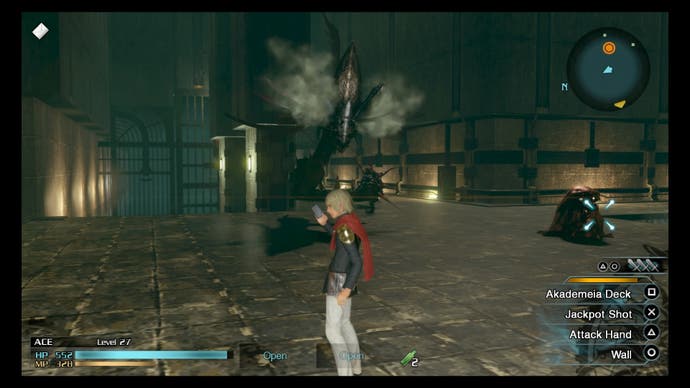
Instead of learning the game's key systems on the job, you're quickly hit with a fusillade of tutorial boxes and expected to remember them all. It appears Square Enix has been caught between a desire to hurry experienced JRPG players through to the fun stuff and holding the hand of novice players, and doesn't really serve either audience particularly well as a result.
Nonetheless, the real-time combat is immediately rewarding: fast-paced and reasonably intuitive at the most basic level, but possessing enough strategic depth to remain enjoyable after 20 hours or so. Before each sortie, you'll choose a squad, of which three members are immediately active. You'll control one of the trio at any time, with the (excellent) AI responsible for the others, until you tap left or right on the d-pad to switch control. Should anyone fall in battle, you can choose from one of your reserves to replace them, while there's an option to call for backup from powerful allies if you're really struggling.
In action, it's sharp and satisfying. You'll target individual enemies by locking onto them, choosing between regular or magic attacks or special abilities to deal damage, while evading incoming blows or projectiles with a wonderfully responsive dodge. You can replenish health and magic points by standing still, or by siphoning an energy source called Phantoma from fresh corpses, which can be spent back at the academy on powering up your group's various elemental spells. Though it's important to do this when you can, it's a risk unless you've cleared an area: the second or so you're leeching magic from the slain might just be long enough for an enemy soldier to sneak up behind you, or for a distant gunner to fire a volley in your direction.
You're almost always outnumbered, but with a well-balanced team you can get through any encounter. If a shielded enemy is blocking frontal attacks, switch to your classmate and fire a lightning bolt at his back. If you're surrounded by regular grunts, target their leader and the rest will surrender when he collapses, allowing you to steal their rations. More efficient players will bide their time, circling and dodging and waiting for an attack that leaves an opponent exposed. Hit them as the targeting reticule turns yellow and you'll critically damage them; connect when it's red and you'll pull off a Killstrike, instantly draining their health gauge. Conducted at a thrilling pace, this is invigorating stuff - if most real-time battle systems have the rhythm of a tango, this is more akin to a quickstep. Surviving a tricky skirmish unscathed brings a real sense of achievement.
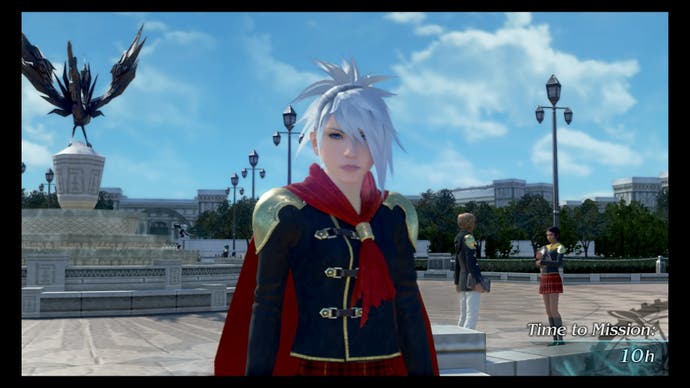
It's true that most encounters tend to favour ranged units, partly because you're less vulnerable when keeping your distance, but also because some enemies' weak points are beyond the reach of daggers and rapiers. Yet you'll need to rely on close-quarters combat for rushing enemies, while the timing for Killstrikes is easier when your opponent is within range of a slash or swipe. Besides, you've got plenty of options on the bench. Indeed, you're encouraged to regularly rotate your squad in order to keep them at a similar level. Even so, you'll need to replay a few missions to get everyone up to speed, though you also have the option of visiting the arena for individual training, which sees the selected unit gaining experience in real-time. It's a system that's very straightforward to game: simply shift your PS4's internal clock forward by a week, and you'll likely have advanced three or four levels.
What a shame, then, that the dungeons you fight in are often boxy and boring, reaching a nadir in the third chapter as you squint your way through a dim, dingy aqueduct with insultingly dumb valve-turning puzzles. Occasionally you're forced into a clunky and half-hearted - if mercifully brief - real-time strategy interlude, as you guide groups of soldiers towards enemy strongholds, thinning out enemy numbers with supporting fire so you and your allies can enter the city in question.
Type-0's Persona-style social aspects, meanwhile, fail to tie into the combat in a similarly meaningful way. Between missions you'll get to explore the academy, chatting to classmates and taking on additional tasks in the field and gaining buffs and items as your reward. Alternatively, you can stay in your classroom and listen to a lecture for a boost to your abilities, though each and every time this involves sitting through a series of short text exchanges between students, as the camera slowly scrolls past the lectern, looking out upon a static scene of the various Class Zero members looking thoroughly bored. What might have passed muster on its portable debut looks rather crude on the big screen.

Sadly, it's far from the biggest technical failing. It's easy to forgive the poor textures and flat scenery, partly thanks to the quality of the underlying art: Tetsuya Nomura has reined in his usual excesses to produce some of his smartest, most sober designs in years. But it's harder to appreciate them when you're wrestling with the game's wretched camera. The barest nudge on the analogue stick is enough to see it lurch wildly in that direction, and as it shifts slightly when you move the left stick, you've got a recipe for disaster. Exacerbating this is the excessive motion blur, presumably added as an attempt to disguise those rough edges. It's even worse during combat: the speed at which your reticule snaps to a new target should be a good thing, but the rapid spin that accompanies it might be enough to make you ill. After one five-hour session I was left with a dull headache and mild nausea.
Even assuming that's something you can overlook, it's hard not to be disappointed by the way Type-0's rebellious spirit yields to conformity as it progresses. A stirring soundtrack that remixes several familiar Final Fantasy themes would be a welcome nod to the past, but the presence of so many other series staples can be jarringly incongruous: one minute you're surrounded by death and misery, the next you're breeding Chocobos, or listening to Moogles yelping 'kupooo!' after every line. As more familiar bosses and summons are introduced, a game that appeared to be establishing an identity of its own soon begins to feel like little more than a well-dressed covers act.
Such is the quandary at the heart of every long-running game series. Type-0 HD bears all the hallmarks of a game simultaneously keen to escape its past while being forced to embrace its heritage. At its best, it's a fine, smartly-paced action-RPG with thrilling combat mechanics that just happens to be a better fit for a handheld than a home console. But, crucially, it represents a promise unkept: this isn't so much a blend of new ideas, more a melange of existing ones. It may have been conceived as a fresh start for Final Fantasy, but Type-0 is more often a false dawn.
